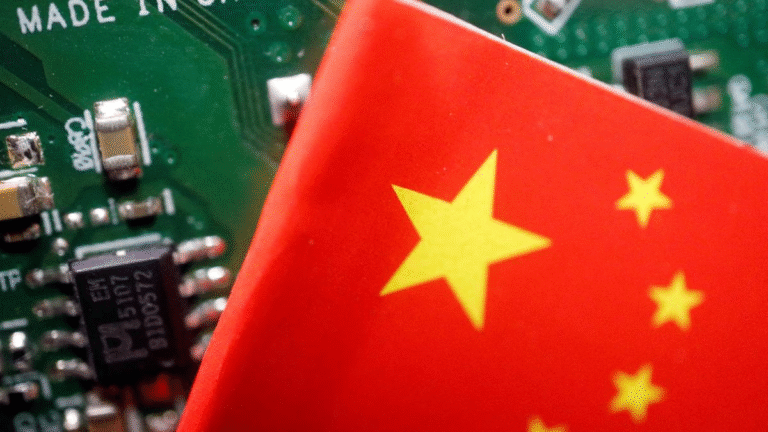
China launches its new K-Visa to attract global tech talent, competing with the U.S. H-1B program. Learn how it works, who benefits, and what it means for the global job market.

🇨🇳 Beijing’s New Move to Woo Global Tech Professionals
China has officially stepped into the global race for technology talent with the introduction of its new “K-Visa”, designed to attract foreign tech experts, scientists, and skilled professionals from around the world.
Unveiled last month, the K-Visa represents China’s most aggressive talent recruitment effort yet, aimed at countering the tightening immigration rules in the United States and positioning Beijing as a global innovation hub.
For professionals like Vaishnavi Srinivasagopalan, an Indian IT specialist with experience in both India and the U.S., the move offers a fresh opportunity.
“The K-Visa for China is like the H-1B for the U.S.,” Srinivasagopalan said. “It’s a good option for people like me to work abroad, especially when the U.S. is making it harder.”
💼 What Is the K-Visa — and How Is It Different from the U.S. H-1B?
The K-Visa supplements China’s existing visa programs like the R-Visa (for high-level foreign professionals) but comes with fewer restrictions.
Unlike the U.S. H-1B, applicants don’t need a job offer before applying, making it easier and faster for skilled foreigners to enter China’s workforce.
Key features of the K-Visa:
- ✅ No pre-employment requirement.
- ✅ Flexible eligibility for skilled professionals in STEM fields.
- ✅ Pathways for long-term residence or research collaboration.
- ✅ Government-backed support for innovation and R&D projects.
This initiative underscores China’s intent to rival the U.S. in attracting global innovators, especially at a time when the American H-1B system is becoming costlier and more restrictive.
💸 Why Now? The U.S. Tightens Its Immigration Rules
Under President Donald Trump, the U.S. has raised H-1B visa fees and imposed stricter screening requirements. The new fee — a whopping $100,000 per new application — has discouraged many global professionals from pursuing jobs in the U.S. tech sector.
This shift has opened the door for China to position itself as a friendlier destination for global talent.
“Students who came to the U.S. hoping for an H-1B visa now face disappointment,” said Bikash Kali Das, an Indian master’s student at Sichuan University. “China is striking while the iron is hot.”
🧠 Beijing’s Bigger Plan: Becoming a Global Tech Superpower
The Chinese Communist Party has made technological leadership a cornerstone of its long-term strategy. With heavy government funding pouring into AI, robotics, quantum computing, and semiconductors, the new K-Visa is intended to fill China’s growing skills gap.
Analyst Barbara Kelemen, Associate Director at Dragonfly Security Intelligence, explained:
“Beijing sees Washington’s immigration tightening as an opportunity. China wants to brand itself as open to global talent and investment.”
Indeed, China is attempting to reverse a decades-long “brain drain”, in which many top Chinese graduates who studied abroad stayed in the U.S. or Europe for better opportunities.
While the exodus hasn’t fully stopped, more foreign experts and overseas Chinese professionals are now returning to or relocating to China — attracted by government incentives, competitive pay, and the promise of influence in cutting-edge industries.
👩💻 From Silicon Valley to Shanghai: Who’s Moving to China?
In 2025, several high-profile tech professionals — including Fei Su, a chip architect from Intel, and Ming Zhou, a senior engineer from Altair — have taken up teaching or research positions in China.
Immigration consultants report rising interest from India and Southeast Asia, where tech workers are exploring China’s K-Visa option amid global job market uncertainty.
“Many skilled workers are curious about the K-Visa,” said Edward Hu, immigration director at Newland Chase in Shanghai. “They see China as a growing tech powerhouse with room to contribute.”
However, the influx of foreign professionals also brings mixed reactions among local workers and graduates.
😟 Local Concerns: Will Foreigners Take Chinese Jobs?
Despite the government’s optimism, not everyone is thrilled. China’s youth unemployment rate for ages 16–24 (excluding students) stands at nearly 18%, sparking anxiety about increased competition.
“The job market is already fiercely competitive,” said Zhou Xinying, a postgraduate student at Zhejiang University. “While foreign professionals can bring new skills, some of us worry this could limit local job opportunities.”
Kyle Huang, a 26-year-old software engineer from Guangzhou, echoed that fear:
“People in tech fields think this might threaten local jobs. The government should balance foreign recruitment with domestic employment needs.”
A state-backed editorial from The Shanghai Observer, however, pushed back against these worries, arguing that foreign professionals will create jobs, not take them.
“The more complex the global environment, the more China will open its arms,” the piece stated, noting that foreign experts could help bridge gaps in AI and semiconductor development.
📊 The Economic Rationale: Filling the Skills Gap
China’s push for foreign talent stems from a critical shortage of high-level technical skills. Despite producing millions of STEM graduates each year, many lack the research experience or global exposure required for frontier technologies.
Michael Feller, Chief Strategist at Geopolitical Strategy, commented:
“Beijing must highlight that foreign talent helps create local jobs by developing industries faster. But even in the U.S., this has been a tough political argument.”
In short, China needs foreign brains to accelerate innovation — even as it manages domestic concerns about job competition.
🌐 The Challenges: Language, Culture, and the “Great Firewall”
While the K-Visa opens doors, foreign professionals still face significant hurdles when working in China.
Common challenges include:
- 🈚 Language barriers, which can complicate professional collaboration.
- 🔒 Strict internet censorship, known as the “Great Firewall,” limiting access to key global platforms and resources.
- ⚖️ Uncertain long-term residency policies, which deter some from settling permanently.
According to official figures, only 711,000 foreign workers lived in China as of 2023 — a tiny fraction in a country of 1.4 billion.
“The U.S. still leads in research and offers clearer immigration paths,” said David Stepat of Dezan Shira & Associates. “And the widespread use of English remains a huge advantage.”
🇮🇳 India’s Tech Talent Looks East — Cautiously
India’s booming tech community is paying close attention to the K-Visa, though reactions are mixed.
Nikhil Swaminathan, an Indian H-1B visa holder working for a U.S. nonprofit, said:
“I would’ve considered China’s K-Visa — it’s a great place for tech — if not for the difficult relationship between India and China.”
Experts agree that while China may attract professionals from Asia, Africa, and parts of Europe, many top-tier candidates still prefer Western destinations such as the U.S., UK, and EU due to language, freedom, and career stability.
“The U.S. may be hurting itself with tighter rules,” said Feller. “But it still holds a stronger global brand for innovation. China will need more than visa perks to match that appeal.”
🧩 Expert Analysis: Can China Really Compete with the U.S.?
China’s K-Visa marks a bold strategic pivot — but the road to global dominance in tech talent is steep.
🔹 Strengths
- State-backed investment in AI, semiconductors, and robotics.
- Streamlined visa processing and lower entry barriers.
- Government-led infrastructure for research and innovation.
🔹 Weaknesses
- Limited international trust due to censorship and surveillance concerns.
- Language and cultural differences that deter Western professionals.
- Perception of political risk and lack of freedom in the workplace.
To truly rival the U.S., China must build not just visa pathways, but an ecosystem that encourages innovation, transparency, and creativity.
🏁 The Global Outlook: A New Era in the Talent War
The K-Visa could mark the beginning of a new global competition for tech minds — one where nations actively court skilled workers as strategic assets.
For the U.S., the policy shift under Trump may inadvertently push some talent eastward.
For China, the challenge lies in proving that its openness is sustainable and that innovation can thrive under its political system.
Either way, the K-Visa signals a transformative moment in global labor mobility — and underscores how deeply technology and geopolitics are now intertwined.






